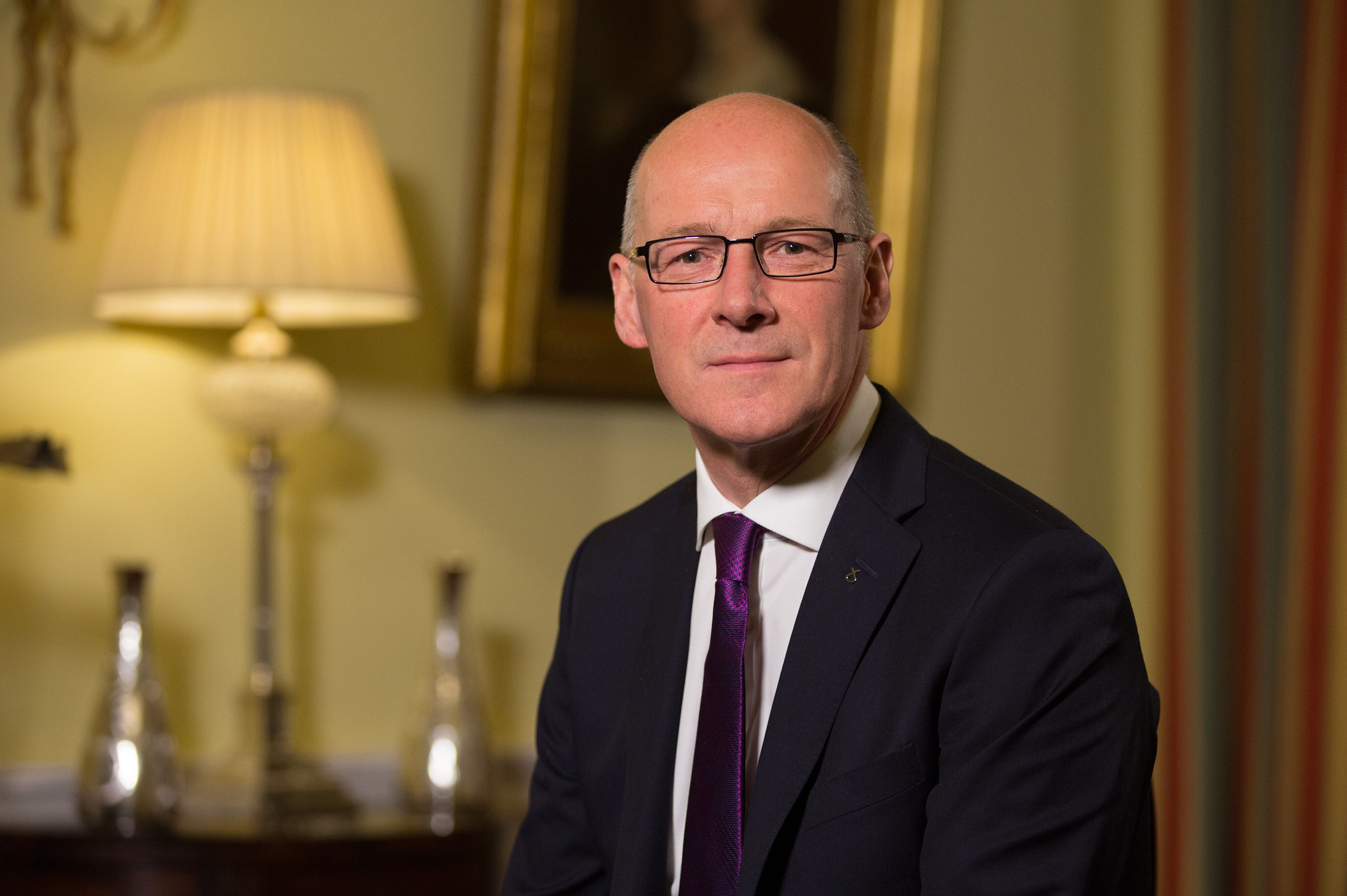Budget 2023: Unexpected tax increases entrench Scotland’s divergence from rest of UK

John Swinney
Tax increases on higher earners in Scotland have entrenched the divergence in income tax regimes north and south of the border, financial experts have said.
John Swinney, the deputy first minister and interim finance secretary, yesterday announced an increase in the higher and top rates of income tax in Scotland from 41p and 46p respectively to 42p and 47p, as well as a reduction in the top rate threshold from £150,000 to £125,140.
The Scottish Fiscal Commission (SFC) forecasts that the changes, taking effect from April 2023, will raise an additional £129 million in 2023/24.
In cumulative terms, decisions made in Scotland on income tax since 2017/18, including decisions this year, will add around £1 billion in revenue in 2023/24, compared to Scotland maintaining the rates and bands applicable elsewhere in the UK, the SFC has said.
The Scottish Government has also increased the Additional Dwelling Supplement (ADS), payable as part of Land and Buildings Transaction Tax (LBTT) for homebuyers who already own a residential property and are not replacing their main residence, from 4% to 6%, raising £34 million in additional revenue.
Daniel Hough, financial planner at RBC Brewin Dolphin, said: “The reduction of the additional tax threshold to £125,140 was expected, bringing it in line with the rest of the UK. The increases to the higher and additional tax rates – up to 42% and 47%, respectively – were less anticipated, but underline the fact that people in these bands are worse off than they would be in other parts of the country, at least in take-home-pay terms.
“No changes to the starter, basic, and intermediate tax rates is obviously good news for those on these rates. However, the freezing of the thresholds mean anyone who has received an increase to their pay in line with inflation this year could well find themselves in a new band and, therefore, paying more tax than they were.
“The increase of the additional dwelling rate from 4% to 6% will further diminish the attractiveness of investing in buy-to-let property in Scotland, at a time when other factors are already pushing many landlords out of the market.”
Sean Cockburn, chair of the Chartered Institute of Taxation’s (CIOT) Scottish technical committee, said: “This is an income tax plan that goes further than the measures set out by the UK Chancellor earlier this Autumn and further entrenches the divergence between the income tax regimes in Scotland and the rest of the UK.
“The cumulative effects of five years of divergence mean that the Scottish income tax system continues to be more generous to those on lower incomes, but increasingly less so to those with higher incomes.
“Increasing the higher rate to 42p also means that those with earnings that fall between the Scottish and UK higher rate tax thresholds of £43,662 and £50,270 will be taxed at a marginal rate of 54% on that slice of income, compared with 32% in the rest of the UK. That is because National Insurance rates are tied to the UK, not Scottish, higher rate.”
He continued: “While the levels of divergence created by devolution have until now not led to any noticeable behavioural changes, the additional changes put forward today may yet prompt those who can, to consider whether they can legitimately lower their liabilities.
“This doesn’t need to be as extreme as choosing to up sticks and leave Scotland. Especially for those with earnings around the margins of the tax thresholds, it might mean working a bit less, incorporating a business or paying a bit more into their pensions.
“This was never going to be a budget of easy choices and the Finance Secretary’s proposals have confirmed that.”
Justine Riccomini, head of tax (employment and devolved taxes) at ICAS, said: “Combined with the reduction in the top rate threshold, the increase in the higher rate and top rates of Income Tax could affect the attractiveness of Scotland as a place to set up a business.
“In many sectors, the international demand for talent means that salaries above £43,662, at which higher rate tax is paid, are not exceptional. The Scottish tax rate may make it more difficult to attract skilled workers to be employed in Scotland.
“The combination of the 2% differential in both higher rate and top rate taxes between Scotland and the rest of the UK, together with the lower threshold at which higher rate tax starts in Scotland, may start to have an impact on people’s choices, particularly at middle income levels.”
Stewart Mathieson, head of tax at EY Scotland, said: “Media reports in the immediate run-up to today’s budget certainly created additional interest, but when the Cabinet Secretary delivered his statement there was no surprise that the tax burden for many in Scotland would be increasing under the progressive tax regime.
“The tax headlines from this budget are undoubtedly around Scotland’s income tax policy moving even further away from the rest of the UK, and the Additional Dwelling Supplement for residential second homes increasing by 50% from 4% to 6%.
“The focus of today’s budget was on providing support for those in need and to front line services. By comparison, there was little extra for workers or employers, nor were there significant steps to incentivise investment in Scotland.
“The increase in the ADS on LBTT may well act as a barrier to those looking to invest in property, while many of Scotland’s real estate businesses and their associated supply chains could see this as a further burden in addition to increasing interest rates.”
Vishal Chopra, KPMG’s head of tax in Scotland, said: “This Scottish budget, delivered during a veritable winter of discontent, was all about preparing for even harder days ahead. With Christmas fast approaching, Mr Swinney will have hoped to spread universal cheer, but given the hard decisions he had to make, pleasing everyone this festive season was always going to be an impossible task.”










